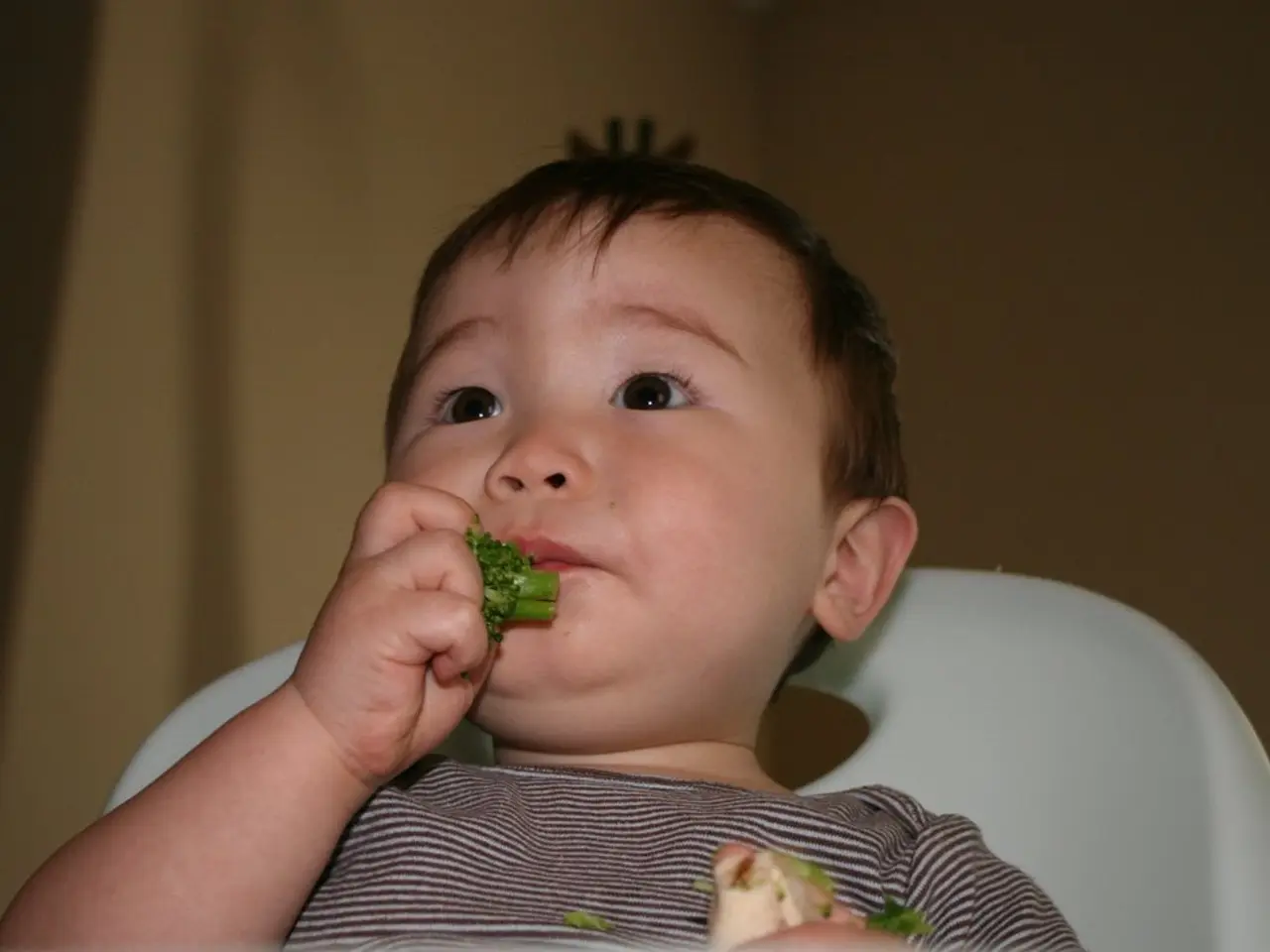Signs and indicators of eosinophilic esophagitis include difficulty swallowing, food impaction, chest pain, and heartburn. Additionally, these issues may be accompanied by vomiting, acid reflux, and a feeling of food stuck in the throat.
Eosinophilic esophagitis (EoE) is a condition that affects the esophagus, a tube that carries food from the throat to the stomach. This condition is characterised by the swelling of the esophagus due to the immune system releasing excess white blood cells called eosinophils.
Common symptoms of EoE include food getting stuck in the throat, nausea and vomiting, stomach pain, weight loss, poor appetite, malnutrition, and symptoms similar to gastroesophageal reflux disease (GERD) such as heartburn. Difficulty swallowing, or dysphagia, is one of the main symptoms for people of all ages. In children, stunted growth can also be a symptom due to difficulty swallowing and potential malnutrition.
In some severe cases, the esophagus may become so narrow that food cannot pass properly, leading to food impaction. If this happens, doctors may suggest esophageal dilation to widen the esophagus and make food passage easier.
Doctors may diagnose EoE based on a review of symptoms, a physical exam, and an upper endoscopy. During an upper endoscopy, a small tube is inserted into the esophagus to take a tissue sample. A count of 15 or more eosinophils under a microscope suggests EoE.
The exact cause of EoE is unknown, but it appears to occur due to an atypical immune system response related to a food allergy or environmental trigger. Some people with EoE also have asthma, with about 50% of people affected by both conditions.
Treatment for EoE centers on controlling inflammation and managing symptoms. This can involve dietary modifications, such as eliminating foods that trigger allergic reactions or immune responses. In some cases, medications like topical steroids, acid suppressors, and biologics may also be prescribed.
In children, management requires coordinated care involving pediatric gastroenterologists, allergists, and dietitians due to anatomical and physiological differences from adults. Guidelines recommend specialist pediatric care when possible, though adult gastroenterologists can contribute if pediatric specialists are unavailable.
In severe cases, endoscopic dilation may be performed to stretch the esophagus and improve symptoms. This is mostly used in adults but can be applied carefully in children if needed.
Recently, biologics, such as Dupixent, have received approval from the FDA for treating EoE.
It is important to note that both EoE and GERD may share some symptoms, and a doctor may initially diagnose a person with GERD. However, a clinical evaluation can help distinguish between the two conditions.
EoE can occur in both males and females, but it appears to be more common in males.
In conclusion, EoE is a condition that requires careful management and coordinated care, especially in children. If you or someone you know is experiencing symptoms of EoE, it is important to consult a healthcare professional for a proper diagnosis and treatment.
References: 1. Aceves, L., & Muñoz-Perez, J. (2020). Eosinophilic esophagitis. In StatPearls [Internet]. Treasure Island (FL): StatPearls Publishing. 2. Bhatia, M. (2020). Eosinophilic esophagitis. In UpToDate [Internet]. Wolters Kluwer Health, Inc. 3. Luger, T., & Muñoz-Perez, J. (2019). Eosinophilic esophagitis. In Gastrointestinal Disorders (Second Edition). Elsevier. 4. Muñoz-Perez, J., & Luger, T. (2019). Eosinophilic esophagitis. In Gastroenterology (Second Edition). Elsevier. 5. Rupani, P., & Muñoz-Perez, J. (2019). Eosinophilic esophagitis. In Pediatric Gastroenterology, Hepatology, and Nutrition (Second Edition). Elsevier.
- EoE, with symptoms like food getting stuck, nausea, vomiting, and reflux-like heartburn, affects the esophagus, a pathway for food to the stomach.
- Difficulty swallowing, or dysphagia, is a common EoE symptom, impacting individuals across different age groups.
- In children, EoE can lead to stunted growth due to malnutrition caused by difficulty swallowing.
- Severe EoE cases can result in the esophagus becoming so narrow that food can't pass properly, causing food impaction.
- Doctors may suggest esophageal dilation to widen the esophagus and ease food passage in these severe cases.
- A doctor may review symptoms, conduct a physical exam, and perform an upper endoscopy to diagnose EoE, checking for an excess of eosinophils in tissue samples.
- The exact cause of EoE is unknown, but it seems linked to an immune system response related to a food allergy or environmental trigger.
- In some people, EoE coexists with asthma, with about half of affected individuals having both conditions.
- Treatment for EoE focuses on managing symptoms and controlling inflammation through dietary modifications, medications, or endoscopic dilation.
- In children, efforts require coordinated care involving gastroenterologists, allergists, and dietitians due to anatomical and physiological differences compared to adults.
- When available, specialist pediatric care is recommended, but adult gastroenterologists can contribute if pediatric specialists are unavailable.
- Endoscopic dilation can be used in adults and carefully in children to stretch the esophagus and relieve symptoms.
- Recently, biologics like Dupixent have been approved by the FDA to treat EoE.
- Both EoE and GERD can share similar symptoms, and careful clinical evaluation is needed to distinguish between the two conditions.
- Men appear to be more susceptible to EoE, though it can affect both sexes.
- In summary, EoE demands careful management, especially for children, and offers a reminder to consult healthcare professionals for accurate diagnosis and appropriate treatments.




